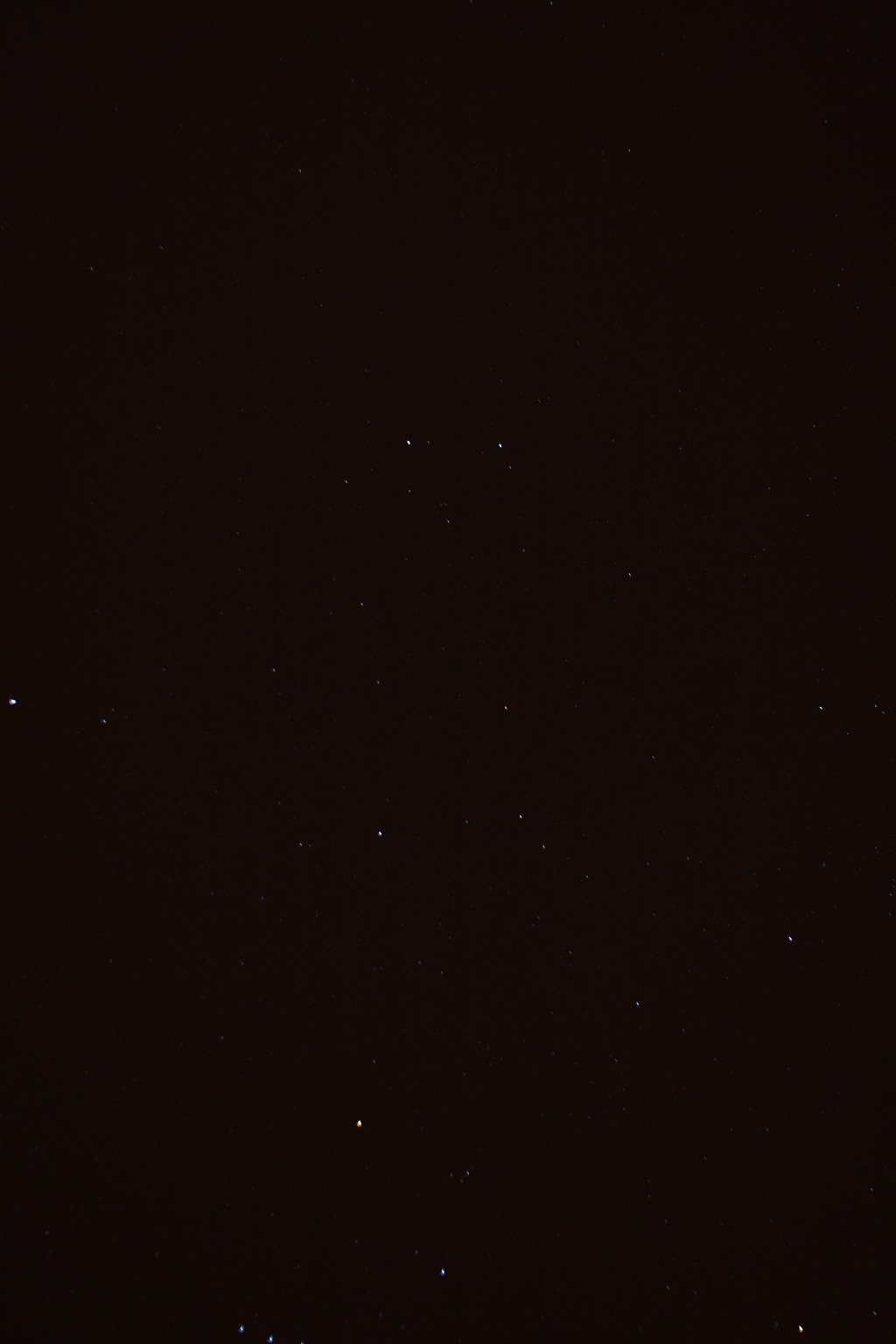The Milky Way is a truly splendid sight - a band of fairy dust that stretches from one side of the horizon to the other. Taken with enhanced color, the Milky Way looks spectacular. Many times there have been some very admirable images of it that I've seen. The problem is taking pictures for myself of the Milky Way. It's OK to admire somebody else's work but it's something I - and no doubt - you want to do.
My first attempt at night sky photography was when I was down in Key West in March of 2012. I had intended to visit my parents in Britain but encountered a lady and ended up spending a very pleasant week in Key West with her. During that week I had a go at night sky photography, the sky being quite dark. It's one of those images that I just wish I could go back and retake.
The exposure on that photograph wasn't really long enough to bring out the sky properly. Whether there was too much light pollution is unknown because it was 2 years ago and I can't remember now. Recently however, I attempted a better sky photo more locally. The following image was shot over the Lake Murray Dam. Sadly, light pollution there was severe as can be seen from the image.
It's possible in both images to see that roughly the same area of sky has been photographed (almost two years apart). The light pollution is appalling. Clearly something needs to be done in order to take a good sky image.
Looking at the light pollution, it seems largely to be sodium or mercury lighting. This comes from street lamps and represents light that is being wasted by shining it upwards where it's no use to anybody. This in turn means more powerful lighting is needed to illuminate the things that need to be illuminated. A simple reflector installed on each street lamp to aim the light down to where it's supposed to be would mean less powerful lamps would be needed. That in turn would mean less energy would be expended. That in turn would mean less of your tax dollars are wasted. What that orange glow represents is wasted tax dollars. It also means more fossil fuels burned by power stations in order to light up areas of the sky needlessly.
In a casual online search, the subject of Sodium/Mercury blocking filters came up. It seems that there are companies selling them. Indeed, Cloudy Nights has a review of one. Astronomik even sells one. The problem is that they are all behind the lens filters and not in front of the lens filters. This causes all kinds of problems with the lens mechanism as they're designed for use with telescopes. They're also frightening prices.
In the ideal world, from my base in Lexington, South Carolina, I would drive up to the Blue Ridge Parkway and spend a few hours one night taking photographs as there are no big towns or cities anywhere near the middle of the mountains that can cause sufficient light pollution to worry about. That though is a run of about 185 miles in each direction or for me about 20 gallons of fuel at around $3.50 a gallon - not to mention about 4 hours driving each way. That makes the $200 of a filter seem almost worthwhile if an hotel room is factored in as well. There is, however, a snag - the filters only fit Canon EOS cameras that use EF lenses. The XT uses EF-S lenses which would as mentioned before have an issue with the lens mechanism.
Thus, it looks that the only way to get good sky photos is to head away from the Lexington/Columbia/Lake Murray area. There is reportedly a private observatory in Newberry though it doesn't have a website associated with it. The night sky must be better in Newberry. Maybe one day I might head over there. Truth be told without a job I'm limiting my milage in order to conserve money until I can get a job though with the sexism I had the other day, it could be a while.


No comments:
Post a Comment